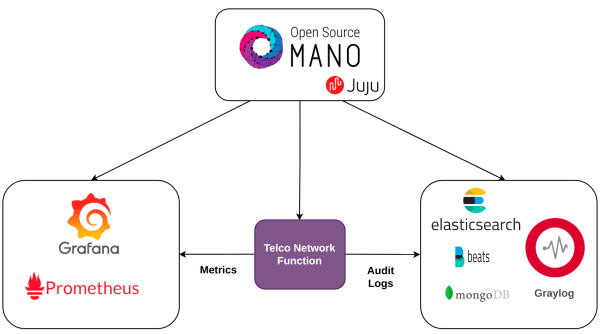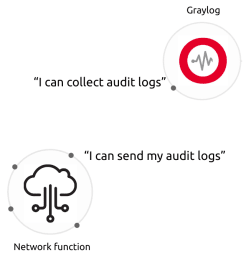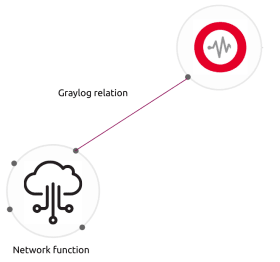NFV orchestration: Network functions auditability with the open-source LMA stack
Wajeeha Hamid
on 20 March 2021
The transition to virtualized infrastructure and software network functions requires a re-evaluation in the telecom production environments. Network function is not alone. It has always been an important piece in the puzzle but requires a set of non-functional bits to complete the big picture and which brings the lifecycle management of network functions to the discussion.
Lifecycle management of network function: specifies the quality attribute of the network function which includes the monitoring, logging, scaling, auditing, upgrades, and security, etc. To achieve exceptional performance, these Day-2 operations become tiresome in manual management processes and the big functions need operations to be open source and automated. Although there are multiple tools for LMA (Logging, Monitoring, and Alerting) like Prometheus, Grafana, and Graylog which can serve the purpose but reconfiguring these tools with every update in your network functions can reduce the human operators to tears.
Model-driven monitoring and audit trail logs infrastructure
The design presented below is the model-driven audit trail logs infrastructure which uses OSM (Open Source MANO) and Juju to automatically integrate your network function to the existing LMA stack.
Open source management and orchestration (MANO) stack is aligned with ETSI NFV which enables the network functions onboarding and orchestration in virtual and containerized environments, as required in modern telco networks. The driver behind OSM is Canonical’s Juju, which is the application modeling tool that provides the open-source operations (deploy, scale, upgrade, etc.) code and the best way to automate the behavior of your network function.

The infrastructure shown above enables the automated onboarding, monitoring, and auditing of the Charmed network function. Each component in the proposed architecture focused on the ease of deployment and operations:
- OSM is responsible for onboarding and orchestration of the VNF (Virtual Network Function), KNF (Kubernetes-based Network Function), and PNF (Physical Network Function).
- The repeatable infrastructure deployment is made possible by the Juju model which is a package of all the applications i.e Prometheus, Grafana, Graylog, and Elasticsearch.
- The tasteful experience of automated integration between monitoring components and the network function is provided by Juju relations.
To summarize the promise of effortless execution, the following is a brief example of deploying your charmed workload and relating it to any LMA tool.
- juju deploy network-function
- juju deploy graylog
- juju relate graylog network-function
|
|
|
That’s it. You have just enabled auditing into your network function.
For an end to end demonstration please watch our video at OSM Ecosystem Day
Talk to us today
Interested in running Ubuntu in your organisation?
Newsletter signup
Related posts
Telco workloads orchestration in multi-clouds environments – focus for Open Source MANO release ELEVEN
Open source MANO release ELEVEN is here with another set of exciting features for the telco world!! Promising the production-grade orchestration of telco...
Orchestration in Telcos: the multi-vendor and multi-cloud environments…
The use of NFV migration is becoming commonplace, it is made apparent there is a need for a higher degree of software management, smoother upgrades, and...
Onboarding and orchestrating network functions with Open Source MANO (OSM)
Do I need to orchestrate my network functions? Well, the answer depends on the price-performance assumptions of your infrastructure and workloads. It seems...


